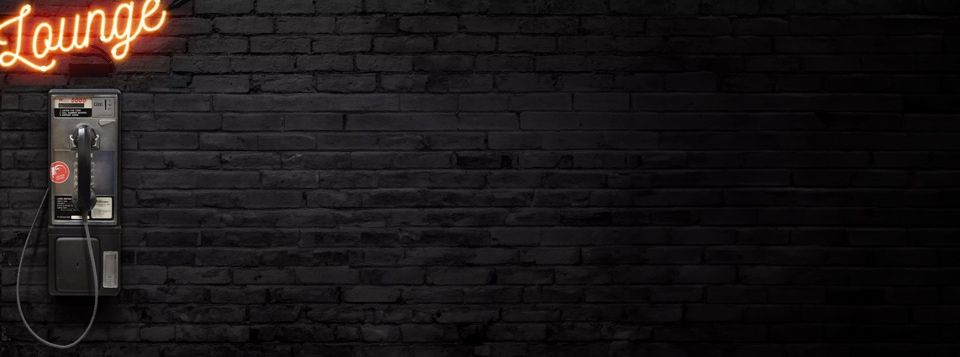10 Common Myths About Graphic Design

Graphic design, an essential visual communication and aesthetics field, must be more aware of misconceptions. This article seeks to dispel some of the most prevalent myths, mainly focusing on web design myths, myths of mobile web design, and logo design myths. By understanding these common fallacies, we can appreciate the true nature and challenges of the graphic design industry. But first, let’s start with some interesting facts about graphic design:
Facts About Graphic Design
Dispelling myths around graphic design also involves sharing some enlightening facts, such as:
- Graphic design is not just about making things look good; it’s about effective communication.
- The demand for graphic designers is rising, particularly in digital and interactive media.
- The term ‘graphic design’ was coined by William Addison Dwiggins in 1922, highlighting the field’s long and evolving history.
Web Design Myths Expanded
In digital presence, web design is crucial, yet misconceptions often surround it. Let’s delve deeper into common web design myths to understand the realities behind creating and maintaining a successful website.
Myth 1: Once a Website is Built, It’s Complete
- Reality: The notion that a website, once live, requires no further attention is a significant misconception. In reality, a website is akin to a living entity in the digital space. It demands regular updates for several reasons:
- Search Engine Optimization (SEO): Search engines like Google frequently update their algorithms. To maintain or improve your site’s ranking, you must regularly update your website with SEO best practices.
- User Experience (UX): User preferences and digital interaction patterns change. Regularly updating the UX design of your website ensures it remains user-friendly and meets evolving user expectations.
- Security: With the increasing threats in cyberspace, regularly updating security features is vital to protect your website from vulnerabilities.
- Design Trends: Web design trends evolve swiftly. A website that looks modern today may seem outdated in a couple of years, if not sooner. Staying abreast of design trends is vital to keeping your website appealing and engaging.
Myth 2: A Good Website Only Needs to Look Attractive
- Reality: While a visually appealing website can attract visitors, it takes much more to keep them engaged and encourage them to return.
- User Navigation: The ease with which users can navigate your site and find the necessary information is crucial. Intuitive navigation contributes to a positive user experience, thus creating more conversions.
- Content Relevance: High-quality, relevant content is critical to engaging and retaining visitors. It’s not just about how your website looks but also about what it says and how it says it.
- Load Speed: Web users typically expect a site to load in two seconds or less. Slow loading times can lead to high bounce rates and lost traffic. Optimizing your site’s speed is as important as its aesthetic appeal.
- Responsiveness: With the variety of devices available today, a website must perform well across all platforms – a desktop, tablet, or mobile phone.
Myth 3: Web Design is Easy, and Anyone Can Do It
- Reality: The democratization of web design tools has led some to believe anyone can design a website. While agencies have become more accessible, effective web design is a complex field requiring a blend of diverse skills.
- Design Skills: Understanding the principles of good design, color theory, typography, and layout is fundamental.
- Technical Knowledge: A good web designer must be able to grasp coding languages like HTML, CSS, and JavaScript or at least be familiar with content management systems and web development frameworks.
- Understanding of User Experience: Crafting sites that are functional and provide a seamless user experience requires understanding human-computer interaction and user behavior.
- SEO and Digital Marketing: Generating traffic to a website involves knowledge of SEO, content strategy, and sometimes even digital marketing tactics.
- Adaptability and Continuous Learning: The digital landscape is constantly changing. A good web designer must be adaptable and committed to continuous learning in order to keep up with the latest trends and technologies.
Expanded Myths of Mobile Web Design
As mobile devices increasingly become the primary means for internet access, the importance of mobile web design has surged. Yet, this field is often misunderstood, leading to misconceptions about effective mobile web design.
Myth 4: Mobile Design is Just a Smaller Version of Desktop Design
- Reality: The belief that mobile design is merely a scaled-down version of its desktop counterpart is a significant oversimplification. Mobile web design requires a distinct approach due to several key factors:
- Touch Interactions: Unlike desktops, mobile devices are primarily touch-based. Designing for touch involves considering the size and spacing of interactive elements to ensure they are easily tapable.
- Screen Size: The smaller screen size of mobile devices necessitates a different approach to layout and content hierarchy. Important information needs to be immediately visible without excessive scrolling.
- Load Speed: Mobile users often access the web on the go, sometimes with slower internet connections. Optimizing images and content for fast loading is crucial.
- Mobile-Specific Functionalities: Features like ‘click-to-call’ buttons or GPS-based directions are unique to mobile web design and enhance the user experience on mobile devices.
Myth 5: Mobile Websites Don’t Need to be as High-Quality as Desktop Sites
- Reality: The quality of a mobile website should not be compromised compared to its desktop version. Users often have higher expectations for mobile experiences.
- User Experience (UX): Mobile users expect a seamless, intuitive, and efficient browsing experience. This involves simplified navigation, well-structured content, and fast load times.
- Design Quality: A mobile website, like its desktop version, must be visually appealing and aligned with the brand’s identity.
- Functionality: All key functionalities on the desktop site should be accessible and smoothly operable on mobile devices.
Myth 6: Mobile Design Isn’t as Important for Business Websites
- Reality: This myth underestimates the growing trend of mobile internet usage. Mobile web design is now more crucial for many businesses than desktop design.
- Growing Mobile Traffic: An increasing number of consumers use mobile devices to conduct online searches for products, services, and information. Ignoring mobile design can result in a significant loss of potential traffic and customers.
- Local Search and Commerce: Mobile devices are often used for local searches, which can lead to immediate actions, such as store visits or purchases. Businesses must be optimized for mobile risk of missing out on this local traffic.
- Mobile-First Indexing: Mobile-friendly websites are prioritized and rewarded within search engines like Google. A non-optimized mobile site can negatively impact a business’s visibility in search results.
- Competitive Edge: Offering a superior mobile experience can give businesses a competitive advantage in markets where mobile usage is high.
Expanded Logo Design Myths
The logo design process, crucial in establishing a brand’s identity, is frequently burdened by widespread misconceptions. These myths can lead to oversimplified and ineffective approaches to logo creation, undermining the brand’s potential impact and recognition.
Myth 7: Logos Need to Be Literal and Describe Exactly What a Company Does
- Reality: This myth suggests that logos must depict a company’s products or services explicitly. In truth, the most effective logos often use abstract or symbolic imagery to capture a brand’s essence.
- Brand Essence Over Literal Representation: Effective logos communicate more than just the business’s nature. They encapsulate the brand’s values, ethos, and personality.
- Simplicity and Timelessness: Abstract or symbolic logos tend to be simpler, making them more memorable and timeless. A complex, literal logo can become cluttered and lose impact.
- Versatility: Abstract logos often offer greater versatility across various mediums and contexts, making them more adaptable for different marketing materials and platforms.
Myth 8: Logo Design Is a Quick and Easy Process
- Reality: Contrary to this belief, logo design is a complex process that requires a deep understanding of the brand, creative exploration, and meticulous refinement.
- In-depth Brand Analysis: It involves understanding the brand’s mission, vision, audience, and market position. This insight guides the design direction.
- Creative Process: Designers explore various concepts, experimenting with colors, shapes, and typography. This exploration is critical to developing a unique and fitting design.
- Collaboration and Revisions: The process often involves collaboration with stakeholders and multiple revisions, ensuring the final design aligns with the brand’s identity and objectives.
Myth 9: A Logo Is All About Aesthetics
- Reality: While the visual appeal of a logo is undeniably essential, its functionality and relevance to the brand’s message are equally crucial.
- Functional Design: A great logo must be scalable, legible, and recognizable across various applications, from small digital icons to large-scale print ads.
- Adaptive Design: The logo should maintain its integrity in color and grayscale, ensuring effectiveness in both digital and print mediums.
- Message Conveyance: Beyond looking good, a logo should communicate the brand’s core message and connect emotionally with its target audience.
Myth 10: A Logo’s Success Is Solely Dependent on Design Quality
- Reality: While the design quality of a logo is vital, its success also hinges on how well it is integrated into the brand’s overall strategy and marketing efforts.
- Consistent Branding: A logo needs to be part of a consistent branding strategy. Brand elements like color schemes, typography, and imagery should complement it.
- Effective Marketing: The impact of a logo is also determined by how effectively it is marketed. A well-designed logo needs proper exposure and association with the brand’s values and message to become iconic.
- Evolution Over Time: Sometimes, a logo’s significance and recognition grow. The logo may need to evolve to stay relevant and maintain its connection with the audience as the brand grows and market conditions change.
Concluding Thoughts
Graphic design, intersecting technology, art, and business, is a complex field that is much more than creating visually appealing content. It’s a continuous process of problem-solving, creativity, and strategic thinking that plays a vital role in various aspects, including web and mobile app design and logo creation. Each of these areas is fraught with myths that often obscure graphic design’s true nature and challenges. By debunking these myths, we understand that graphic design is about aesthetics and creating a visual language that effectively communicates and resonates with the audience. It’s about crafting designs that are visually engaging, functional, adaptable, and enduring. Whether it’s through a well-designed website that continually adapts to the ever-changing digital landscape, a mobile design that caters to specific user needs and behaviors, or a logo that embodies a brand’s essence and evolves with it, graphic design is integral to building a strong, coherent, and impactful brand presence.
The role of graphic design in business and communication is often underestimated, marked by oversimplifications and misconceptions. Web design, for instance, extends beyond initial creation, requiring ongoing adaptation and refinement to meet evolving technology, search engine algorithms, and user preferences. Mobile web design, equally crucial, demands a specialized approach, considering the unique functionalities and user interactions of mobile devices. Similarly, logo design transcends aesthetic concerns, encompassing strategic brand representation and audience connection. Each of these aspects highlights the ongoing nature and intricacies of effective methods. Therefore, recognizing and dispelling these myths is essential for businesses and designers to approach graphic design with the appropriate mindset, ensuring the development of strategies that are not just visually striking but also strategically sound and aligned with broader business goals. If you would like to learn more about graphic design and how it can assist your business contact our Brandtenders today.






